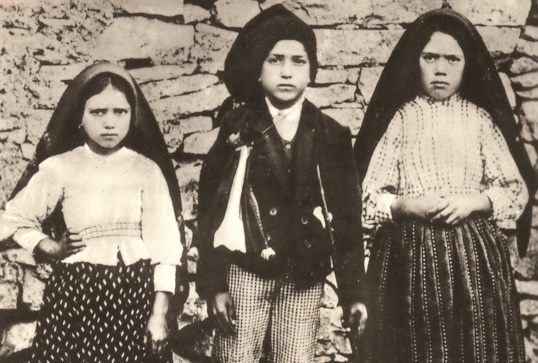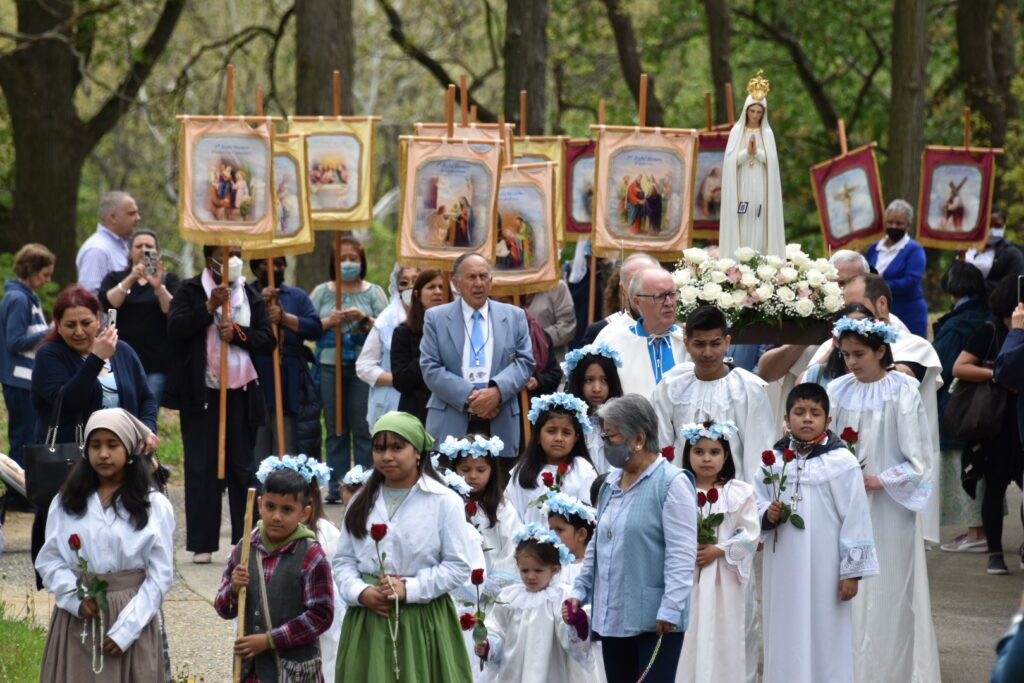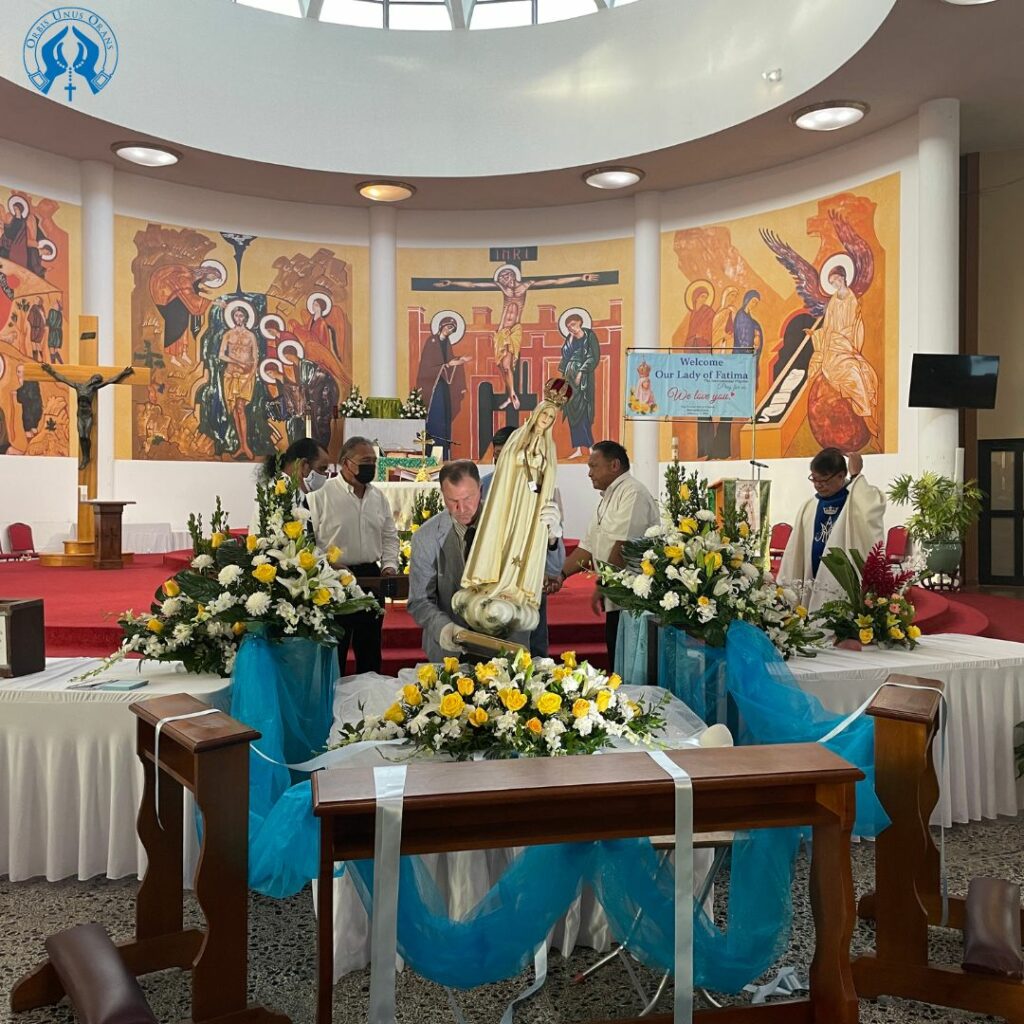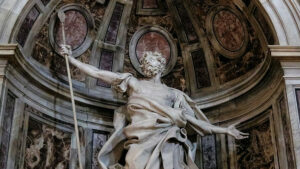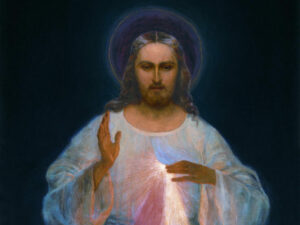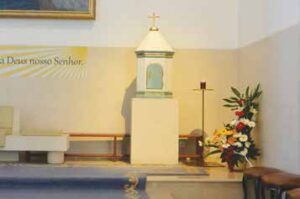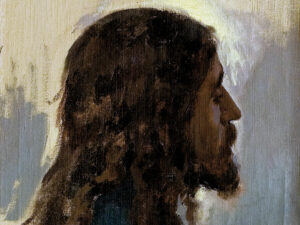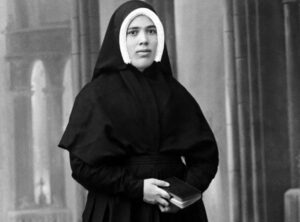By Barb Ernster –
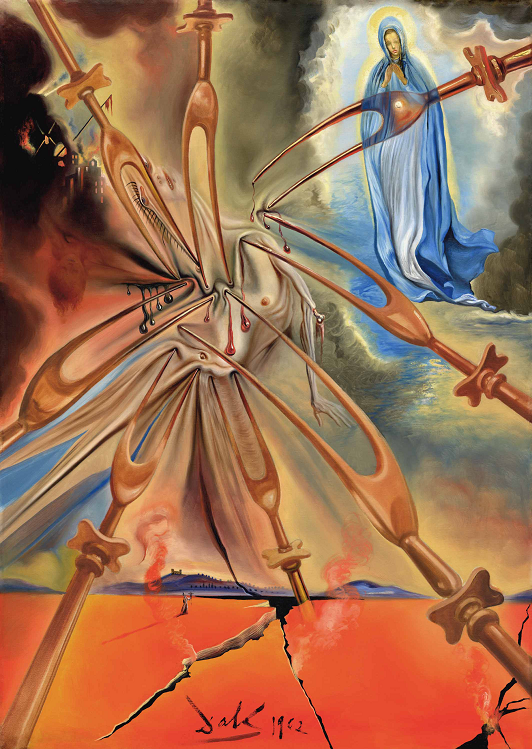
Who Was Salvador Dali?
Salvador Dali is considered one of the greatest artists of the 20th century and the most famous surrealist. At the height of his popularity in 1960, he was commissioned by the Blue Army of Our Lady of Fatima to paint the vision of hell as the Fatima seers experienced it on July 13, 1917. The idea for the painting came from a seminarian who had converted to Catholicism upon reading Lucia’s memoirs and the vision of hell. He proposed that Dali could reach young people and unbelievers far more effectively with this message than any Sunday morning homily or story about saints. The commission would change Dali’s life and lead him from his avowed atheism back to his Catholic roots.
Salvador Dali grew up in Spain near the border of France in Catalonia. His father was an atheist and his mother a devout Roman Catholic. Born just nine months after the death of his brother, also named Salvador, he was often told by his parents that he was his brother reincarnated. Having to juggle between the influences of belief in God and unbelief, Dali grew up confused and uncertain, stating once: “Heaven is to be found exactly in the center of the bosom of the man who has faith. At this moment I do not yet have faith, and I fear I shall die without heaven.”
Dali became famous throughout the 1930s and was an immediate sensation in the U.S. after his first exhibition in 1934. His famous painting The Persistence of Memory, with the image of melting pocket watches, helped define his method of creativity and surrealism, the “paranoiac-critical method.” Salvador Dali’s creativity arose from images he drew from the subconscious as he fell into a state of semi-wakefulness, or hypnogogy.
Throughout his life, Dali struggled with the idea of his own death, a fear he could not overcome. He studied new discoveries related to the third dimension, which led him to seek access to the fourth dimension and immortality. His works are permeated with themes of eroticism, death and decay, but also religious themes and subjects related to scientific progress.
The Blue Army Commissions Dali
Salvador Dali was 55 when The Blue Army approached him to paint the vision of hell. John Haffert met with him in a New York hotel to relay the story of Fatima and the vision of hell and discuss a commission.
“It’s up to you to present this vision truthfully and vividly,” Haffert told him. “You are being chosen to be Our Lady’s artist. A visual interpreter for God.”
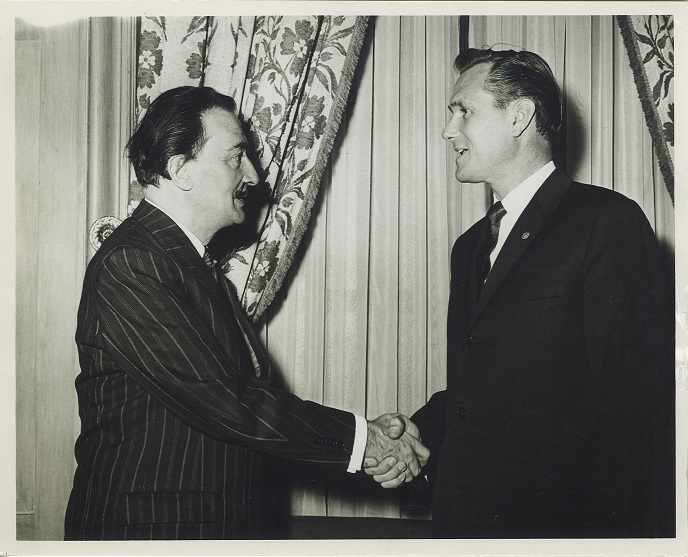

Dali listened intently, then ordered a plate of escargot. When it arrived, he began to probe the snails with escargot forks, explaining to Haffert that the great artists always used pitchforks to depict the devils in hell, but he would use escargot forks instead. “The soul of a sinner is like a snail,” he explained. “It curls and cowls up in the shell and the only way to retrieve it is by using an escargot fork!”
The two of them settled on a commission fee, which Haffert paid for out of his life savings, and signed an agreement on a paper napkin.
Dali and Fatima
Haffert tried unsuccessfully to get a meeting between Salvador Dali and Sister Lucia, who in 1960 was in the cloistered Carmel in Coimbra, Portugal. Dali told Haffert it was no problem. He would study what she said about the vision and put together his own vision, telling him, “I will paint what I see.”
For over a year, Dali poured over Lucia’s description of hell and searched his subconscious for imagery, to no avail. Haffert finally suggested he go to Fatima for inspiration. Part of Dali’s problem was he did not know how to present the Blessed Virgin Mary. His wife, Gala, was always the face of the women in his paintings.
At Fatima, he was brought directly to the spot where the Blessed Mother appeared and where the children saw the earth open revealing hell. The key to understanding the vision, he was told by his guide, Canon Jose Galamba de Oliveira, was the appeal for conversion. And the Immaculate Heart of Mary is a sign of hope for all who respond to her message of conversion.
Through Galamba’s influence, Dali was finally able to meet with Sister Lucia during this trip. He spent a short time with her, conversing through the bars of the parlor grill. Dali would later comment how special it felt to “breath the same air as a future saint,” like being in a heavenly presence. Dali finally had the inspiration to put to canvas the vision of hell.
Before leaving Fatima, Dali asked Canon Galamba to hear his confession. Galamba later told Haffert, it was “the most moving, sincere and profound confession” he had ever heard in his many decades as a priest.
The Artist’s Conversion
On March 13, 1962, Haffert received notice that the painting was finished and Mr. Dali wanted to present it to him, which he titled Inferno. He was not able to be there at the time, but Msgr. Harold Colgan, co-founder of The Blue Army, went in his stead. Colgan was quite shocked at the painting; it was not what he expected.
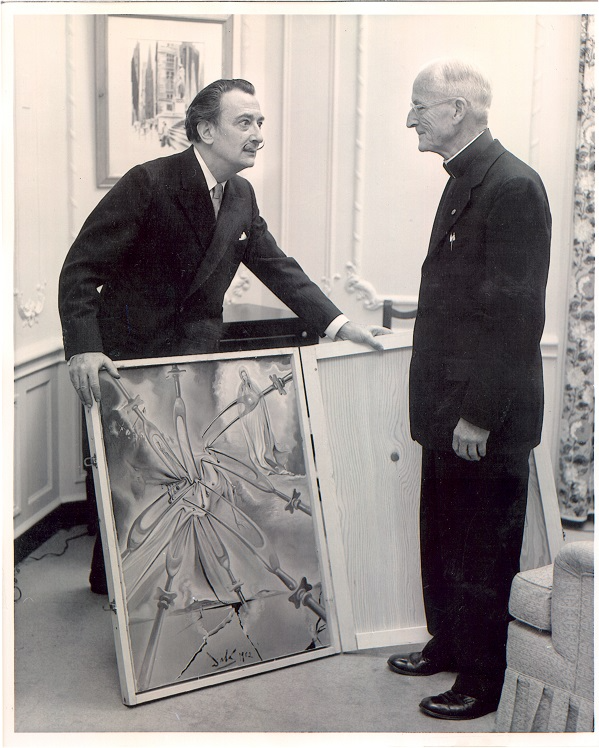

However, upon further study and examination, it is believed that Dali portrayed himself in the vision and painted his own conversion. It shows a dying person, his soul translucent red, tortured and tormented by demons in hell who probe him with escargot forks, trying to extract his soul. The fissured earth opens beneath to the place of hell. The Blessed Mother above, in anguish, revealing her sorrowful and loving heart before the horror of a soul being lost. A lone figure holds up a crucifix to heaven in prayer.
When Sister Lucia finally saw Dali’s Inferno in 1997, she studied it intently, then said to her interpreter, “Hell is spiritual and not physical, and it is impossible for anyone to make an image of hell. The painting comes as close as humanly possible to representing hell.”
No one knows what Sister Lucia said to Dali after his brief visit with her in 1961, but she had a knack for saying exactly what someone needed to hear to return to God, including hardened Communists. She must have helped him immensely for him to want to confess right after their meeting.
Dali returned to his Catholic roots and belief in God and faced his mortality on Jan. 23, 1989, at the age of 84. He kept his religious sentiments secret from the world, and he most certainly continued to struggle, but Sister Lucia surely must have prayed for him all those years.
Salvador Dali’s Inferno was purchased from the Blue Army by a private collector in 2007.
The full story of Dali’s Fatima Secret is portrayed in a documentary film and book (Regina Mundi Press) by Paul Perry.
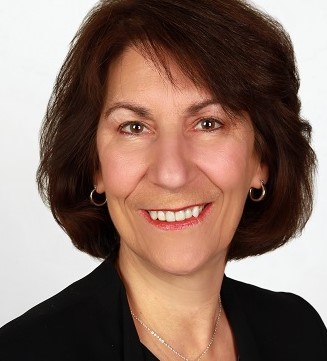

Barb Ernster is the National Coordinator/Communications Manager/Editor for the World Apostolate of Fatima, USA.


